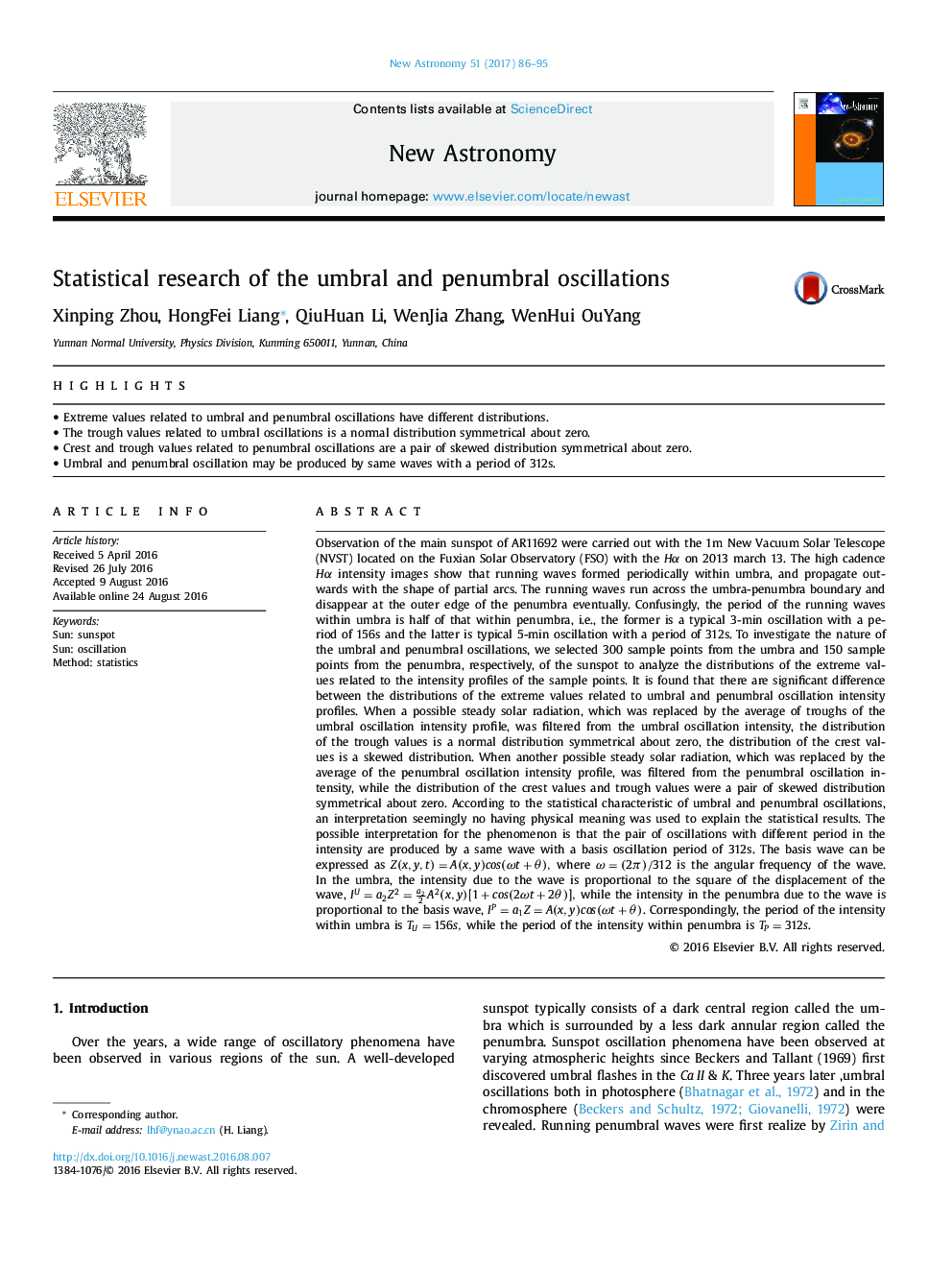| کد مقاله | کد نشریه | سال انتشار | مقاله انگلیسی | نسخه تمام متن |
|---|---|---|---|---|
| 1778678 | 1523727 | 2017 | 10 صفحه PDF | دانلود رایگان |
• Extreme values related to umbral and penumbral oscillations have different distributions.
• The trough values related to umbral oscillations is a normal distribution symmetrical about zero.
• Crest and trough values related to penumbral oscillations are a pair of skewed distribution symmetrical about zero.
• Umbral and penumbral oscillation may be produced by same waves with a period of 312s.
Observation of the main sunspot of AR11692 were carried out with the 1m New Vacuum Solar Telescope (NVST) located on the Fuxian Solar Observatory (FSO) with the Hα on 2013 march 13. The high cadence Hα intensity images show that running waves formed periodically within umbra, and propagate outwards with the shape of partial arcs. The running waves run across the umbra-penumbra boundary and disappear at the outer edge of the penumbra eventually. Confusingly, the period of the running waves within umbra is half of that within penumbra, i.e., the former is a typical 3-min oscillation with a period of 156s and the latter is typical 5-min oscillation with a period of 312s. To investigate the nature of the umbral and penumbral oscillations, we selected 300 sample points from the umbra and 150 sample points from the penumbra, respectively, of the sunspot to analyze the distributions of the extreme values related to the intensity profiles of the sample points. It is found that there are significant difference between the distributions of the extreme values related to umbral and penumbral oscillation intensity profiles. When a possible steady solar radiation, which was replaced by the average of troughs of the umbral oscillation intensity profile, was filtered from the umbral oscillation intensity, the distribution of the trough values is a normal distribution symmetrical about zero, the distribution of the crest values is a skewed distribution. When another possible steady solar radiation, which was replaced by the average of the penumbral oscillation intensity profile, was filtered from the penumbral oscillation intensity, while the distribution of the crest values and trough values were a pair of skewed distribution symmetrical about zero. According to the statistical characteristic of umbral and penumbral oscillations, an interpretation seemingly no having physical meaning was used to explain the statistical results. The possible interpretation for the phenomenon is that the pair of oscillations with different period in the intensity are produced by a same wave with a basis oscillation period of 312s. The basis wave can be expressed as Z(x,y,t)=A(x,y)cos(ωt+θ),Z(x,y,t)=A(x,y)cos(ωt+θ), where ω=(2π)/312ω=(2π)/312 is the angular frequency of the wave. In the umbra, the intensity due to the wave is proportional to the square of the displacement of the wave, IU=a2Z2=a22A2(x,y)[1+cos(2ωt+2θ)], while the intensity in the penumbra due to the wave is proportional to the basis wave, IP=a1Z=A(x,y)cos(ωt+θ)IP=a1Z=A(x,y)cos(ωt+θ). Correspondingly, the period of the intensity within umbra is TU=156s,TU=156s, while the period of the intensity within penumbra is TP=312sTP=312s.
Journal: New Astronomy - Volume 51, February 2017, Pages 86–95
